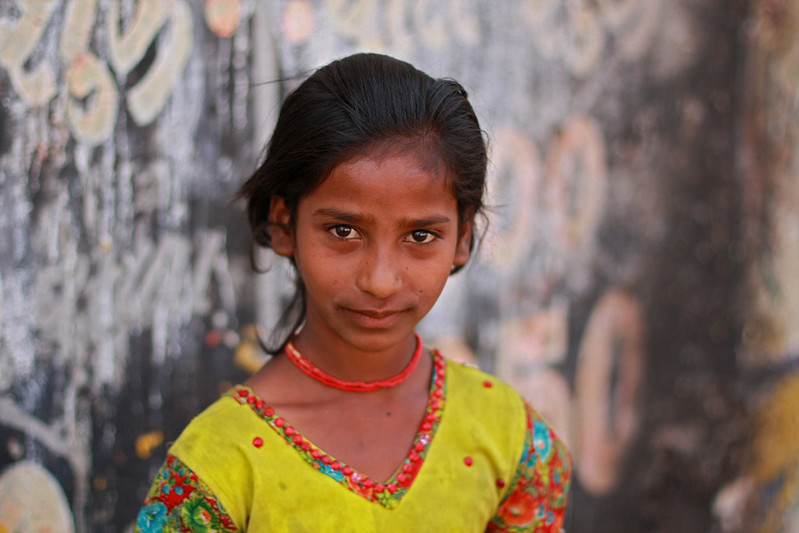Intergenerational Poverty: From Childhood to Adulthood
 Intergenerational poverty refers to poverty that persists across multiple generations within families, particularly in developing countries. According to the World Bank, 70% of global poverty is concentrated in low- and middle-income countries, where systemic barriers hinder upward mobility. Children born into poverty are far more likely to experience economic hardship as adults due to limited access to education, health care and stable employment. Research has revealed that prolonged exposure to poverty during childhood can significantly decrease opportunities for better livelihoods later in life.
Intergenerational poverty refers to poverty that persists across multiple generations within families, particularly in developing countries. According to the World Bank, 70% of global poverty is concentrated in low- and middle-income countries, where systemic barriers hinder upward mobility. Children born into poverty are far more likely to experience economic hardship as adults due to limited access to education, health care and stable employment. Research has revealed that prolonged exposure to poverty during childhood can significantly decrease opportunities for better livelihoods later in life.
The Impact of Poverty on Child Brain Development
Early childhood development is particularly vulnerable to the effects of poverty. A significant portion of brain formation occurs in the first six years of life and living in impoverished conditions can disrupt this critical process. According to Very Well Mind, children raised in poverty often face developmental delays caused by stress, lack of resources and unstable living conditions. On a neurological level, children may experience reduced white and gray matter volume, which affects memory, movement, emotions and cognitive information processing. Mentally, children in poverty are at a higher risk of developing conditions such as anxiety and depression, which can persist into adulthood.
Poverty’s Long-Lasting Effects Into Adulthood
Studies reveal that the longer a child lives in poverty, the greater their likelihood of remaining in poverty as an adult. A study published in Frontline found that children who experienced poverty for 8 to 14 years were significantly more likely to face economic hardship between the ages of 20 and 25.
Reports from the Urban Institute reveal that only a small percentage of children in poverty complete their education. High school graduation rates are notably lower among children raised in poverty compared to their more affluent peers, limiting their opportunities for higher education and better-paying jobs. Physical health is another area heavily impacted. Poor families often live in unsafe housing, increasing risks of accidents, injuries and chronic health issues such as heart disease. Children from impoverished backgrounds are more likely to suffer from poor nutrition, reduced health care access and long-term medical complications.
Solutions for Breaking the Cycle
Addressing intergenerational poverty requires both immediate relief and long-term strategies. A report titled A Roadmap to Reducing Child Poverty emphasizes the importance of providing parents with financial resources to meet their children’s basic needs. By alleviating parental stress, children are given better opportunities to thrive. However, experts also stress the need for sustainable programs that focus on health, education and long-term well-being.
5 Organizations Fighting Poverty Globally
Several organizations are working globally to address poverty and its long-term effects:
- Oxfam International. A global confederation of 19 organizations working in 90 countries, Oxfam provides crisis relief and practical solutions to poverty.
- Organization for Poverty Alleviation and Development (OPAD). An NGO promoting human rights, sustainable development and poverty eradication through education, health programs and economic initiatives.
- Concern Worldwide. Operating for more than 50 years in 50 countries, Concern Worldwide focuses on empowering local communities to address poverty caused by natural disasters, hunger and conflict.
- End Poverty Now (EPN). A Canadian NGO that unites nonprofits to create sustainable solutions. EPN ensures continued support for the programs it initiates, fostering lasting impacts.
- Global Citizen. With a mission to eradicate extreme poverty by 2030, Global Citizen mobilizes global citizens to advocate for systemic change and hold world leaders accountable.
These organizations play critical roles in combating the many forms of poverty, offering both immediate assistance and sustainable pathways to self-sufficiency.
Looking Ahead
Breaking intergenerational poverty involves targeted interventions that prioritize children’s development and family stability. Effective strategies address systemic challenges while empowering communities through education, health care and economic opportunities. By combining immediate aid with sustainable solutions, global initiatives play a crucial role in fostering long-term change. These ongoing efforts offer hope for a future where poverty no longer determines the opportunities and outcomes of successive generations.
– Sadie Treadwell
Sadie is based in Grovetown, GA, USA and focuses on Business and Good News for The Borgen Project.
Photo: Flickr
